What Is Green-on-Green Spray Technology?
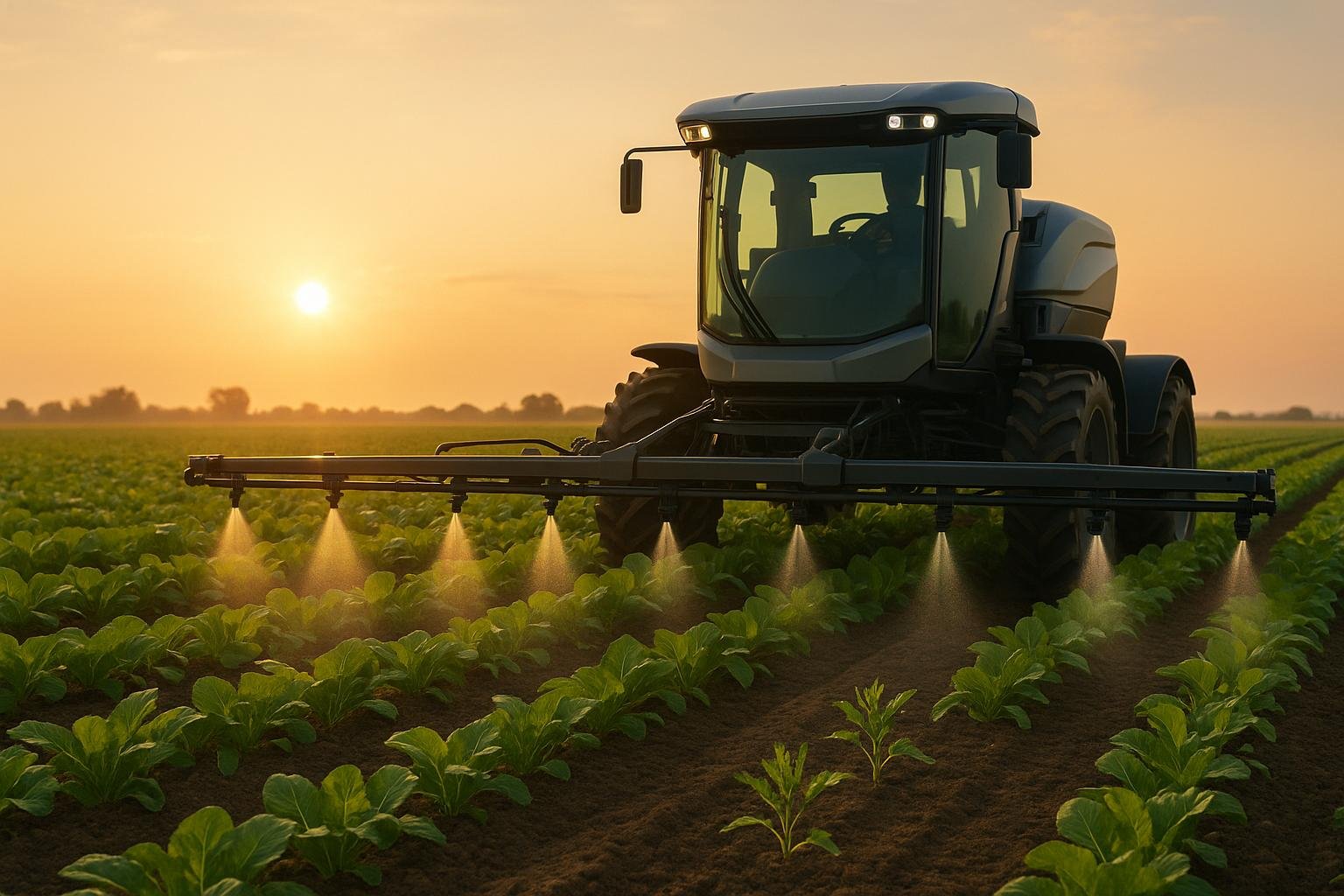
Green-on-green spray technology uses AI and advanced cameras to identify and spray weeds growing among crops with pinpoint accuracy. Unlike traditional methods that spray entire fields, this system targets only the weeds, reducing herbicide use by up to 90%. Here's how it works:
- High-Resolution Cameras: Detect weeds in real-time using near-infrared sensors.
- AI Processing: Analyzes plant traits to differentiate crops from weeds within milliseconds.
- Precision Sprayers: Applies herbicides directly to weeds, minimizing waste and chemical runoff.
This technology is already being used in commercial farming to save costs, combat herbicide resistance, and reduce environmental impact. It’s also being adapted for home gardening with compact, AI-powered tools. While the initial setup can be costly, the long-term savings and efficiency make it a promising solution for modern farming and gardening.
System Components and Operation
Main System Parts
Green-on-green spray technology depends on several advanced hardware components working together efficiently. Here’s a quick overview of its four main parts:
- High-Resolution Cameras: These cameras, paired with NIR (near-infrared) sensors, capture real-time images of plants and detect chlorophyll reflections.
- AI Processing Unit: A high-performance onboard computer processes these images using machine learning. For example, BASF Digital Farming's Xarvio system employs advanced AI to identify weeds in milliseconds, even during their early growth stages.
- Precision Spray System: This system uses individual nozzle control to apply herbicides with pinpoint accuracy. Systems like Amazone's SmartSprayer take it a step further with twin-line capabilities, allowing simultaneous application of multiple products. For instance, soil-active herbicides can be applied across the entire field, while foliar herbicides are spot-sprayed directly on detected weeds.
- Supplementary Components: Additional features include boom-mounted lights for consistent imaging and position sensors for accurate targeting.
Together, these components enable a fast and precise spraying process, described below.
How the System Works
Using the hardware listed above, the system operates through a quick and efficient three-step process:
- Image Capture: High-resolution cameras scan the field continuously, supported by integrated lighting to ensure clear and consistent imaging.
- Real-Time Processing: The AI processor evaluates the captured images, comparing them against a vast database of plant traits. BASF's technology can distinguish crops from weeds by analyzing subtle differences in their structure, size, and growth patterns.
- Decision and Action: Once a weed is identified, the system activates specific nozzles to apply herbicide only where it's needed. This precise targeting has led to a dramatic 90% reduction in herbicide use during field trials with Amazone's SmartSprayer.
| Operation Phase | Time Frame | Action |
|---|---|---|
| Detection | Milliseconds | Cameras capture images |
| Processing | Milliseconds | AI analyzes and identifies weeds |
| Application | Milliseconds | Targeted nozzles activate |
To maintain peak performance, the system’s optical components need regular cleaning to avoid dust and spray residue buildup. Additionally, the AI system requires periodic updates to improve its plant recognition capabilities.
Uses and Applications
Commercial Farming Uses
Green-on-green technology has proven its worth in commercial farming by offering precision and efficiency. It's particularly effective in row crops like sugar beet, corn, and canola. By targeting weeds with remarkable accuracy, this system not only tackles herbicide resistance but also slashes chemical usage. The result? Lower costs and a more environmentally friendly approach to farming.
This targeted spraying method doesn't just save money - it also promotes sustainable agriculture by reducing the overuse of chemicals. While these benefits are most evident in large-scale farming, the same principles can be applied to smaller-scale gardens.
Home Garden Applications
The precision of green-on-green systems has now been scaled down for home gardeners. Compact, handheld devices equipped with cameras make it easier than ever to manage weeds with accuracy. This is especially helpful for gardens with delicate ornamental plants or vegetable patches, where manual weeding can be both tedious and time-consuming.
These tools are designed to simplify gardening while offering the same level of precision seen in commercial applications, helping homeowners protect their plants without over-relying on chemicals.
AI Tools and Integration
AI technology takes green-on-green systems to the next level. Tools like AIGardenPlanner combine artificial intelligence with gardening needs, offering tailored plant recommendations and customized designs. These systems analyze factors such as maintenance zones and spraying requirements, ensuring the timing and application are just right. By incorporating climate data and plant care insights, these AI-powered tools make weed control smarter and more efficient for both large-scale farms and home gardens.
| Application Type | Primary Benefits | Typical Usage Scenario |
|---|---|---|
| Commercial Farming | Lower chemical costs; resistance management | Large-scale row crops |
| Home Gardens | Accurate weed control; plant protection | Ornamental and vegetable gardens |
| AI-Integrated Systems | Improved planning and efficiency | Suitable for both commercial and home use |
Pros and Cons
Cost and Resource Savings
Green-on-green spray technology offers a significant cost advantage by applying herbicides with pinpoint accuracy. Field trials have demonstrated impressive results, with herbicide reductions of up to 90%. For example, Greeneye's system achieved a 94% reduction in herbicide use during preemergence applications and an 87% reduction postemergence. These savings directly translate to lower chemical costs for farmers while still maintaining effective weed control.
This technology also tackles herbicide resistance by enabling targeted chemical applications. By using herbicides more strategically, it helps preserve their effectiveness and minimizes chemical runoff, which benefits both soil health and nearby plants.
Setup and Usage Hurdles
While the cost savings are compelling, adopting green-on-green spray technology isn't without its challenges. The upfront investment can be steep, as it requires purchasing advanced camera and control systems, along with sprayer equipment that can integrate with the technology. In many cases, farmers may need to retrofit or completely upgrade their existing machinery, which adds to the initial expense.
Another hurdle is compatibility. Not all sprayers can easily integrate with the necessary imaging and control systems, often requiring specific equipment models or extensive modifications.
Here’s a quick breakdown of the benefits and challenges:
| Aspect | Benefits | Challenges |
|---|---|---|
| Cost Impact | Up to 90% reduction in herbicide use | High initial equipment investment |
| Performance | 96% weed control on broadleaf weeds* | Requires compatible machinery |
| Environmental | Reduced chemical runoff | Training needs for operation |
| Operational | More precise application control | Regular system maintenance |
*Based on Greeneye system testing in collaboration with the University of Nebraska
"The system performed pinpoint application of foliar herbicides in real-time during day-to-day spraying activities on a large arable farm, with capabilities for full-area application of ground-applied herbicides from an additional tank on the same pass using a twin line system."
– Grainews, 2022
Recent advancements have broadened the scope of this technology, making it suitable for specialty crops like peanuts in Argentina. However, successful adoption requires farmers to carefully evaluate the technical and operational demands of integrating this system into their workflow.
sbb-itb-4d6a8dd
🚀 Ready to Reinvent Your Garden?
Join thousands of homeowners who have transformed their gardens using our AI design tool. Upload one photo to explore endless possibilities.
Get your AI garden designs →Conclusion
Main Points
Green-on-green spray technology represents a significant leap forward in precision agriculture. By leveraging high-resolution cameras and artificial intelligence, this system can identify weeds among crops in real time, allowing herbicides to be applied with pinpoint accuracy - even on actively growing plants. Field trials have demonstrated impressive results, with herbicide usage reduced by up to 90%.
Here are some key milestones in its development:
| Milestone | Achievement | Period |
|---|---|---|
| Amazone Field Trials | Implementation of a 118-foot boom sprayer | May 2021 |
| BASF Smart Spraying | Commercial launch in Brazil | Winter 2021 |
| Bosch Recognition System | Millisecond weed detection | 2021–Present |
These milestones highlight the progress made and set the stage for further advancements in the field.
Future Development
With proven results already in hand, the focus now shifts to refining and expanding the capabilities of green-on-green spray technology. Efforts are underway to broaden its compatibility with different crops and enhance its detection accuracy. BASF Digital Farming's plans to expand availability in North America reflect the growing demand for this technology and its potential for widespread adoption.
For homeowners and professional landscapers, integrating AI-powered tools like AIGardenPlanner can take weed management to the next level. Pairing smart garden designs that naturally limit weed growth with precise spray systems allows users to achieve better results while reducing chemical use.
As partnerships between manufacturers and tech companies deepen, we can expect even more advanced solutions to emerge. These innovations promise to make precision weed control more effective and accessible across various farming and landscaping applications.
'Green on Green' Spray Technology

FAQs
What is green-on-green spray technology, and how does it help reduce herbicide resistance in crops?
Green-on-green spray technology represents a cutting-edge approach in agriculture, combining precision sensors and AI to tackle weeds more efficiently. Instead of spraying herbicides across entire fields like traditional methods, this system pinpoints weeds among crops and applies herbicides only where needed.
This targeted method reduces excessive chemical use, which is a big step toward addressing the issue of herbicide-resistant weeds. By curbing resistance, farmers can protect their crops while embracing farming practices that are better for the environment. This approach supports long-term productivity and helps maintain healthier ecosystems.
What challenges might farmers encounter when using green-on-green spray technology?
Farmers considering green-on-green spray technology might encounter a few hurdles along the way. One major concern is the upfront cost - the advanced sensors and specialized equipment required can demand a considerable financial investment. For many, this can feel like a significant barrier, especially when budgets are already tight.
Another potential challenge is the learning curve. For those new to precision farming tools, getting comfortable with the system’s operation and understanding its full capabilities might take time and effort. On top of that, ensuring the technology performs well in different field conditions can be tricky. Variations in crop density, weed types, and even weather conditions can impact how effectively the system works.
Finally, regular maintenance and calibration are crucial to keep the equipment running smoothly and delivering accurate results. While these challenges might seem daunting, with the right training and support, farmers can overcome them and unlock the benefits of precision farming, including improved efficiency and more sustainable practices.
How can green-on-green spray technology be used effectively in home gardening?
Green-on-Green Spray Technology
Green-on-green spray technology is a cutting-edge approach that uses precision sensors to tell the difference between plants and weeds based on their color and unique traits. This allows for highly targeted spraying, ensuring only the desired plants receive treatment. The result? Less waste and a significant reduction in chemical use.
For home gardeners, this technology offers a practical way to keep flower beds, vegetable patches, and lawns weed-free. By applying treatments with greater accuracy, it saves time, cuts costs, and supports a healthier environment. While it’s been a staple in large-scale farming, recent advancements are making it more accessible for smaller gardens and personal use.
🎨 Visualize Your Dream Garden Today!
Transform any outdoor space into a professional landscape design in minutes. Just upload a photo, choose your style, and let our AI do the rest.
Start your garden transformation now →Related posts
Related Articles
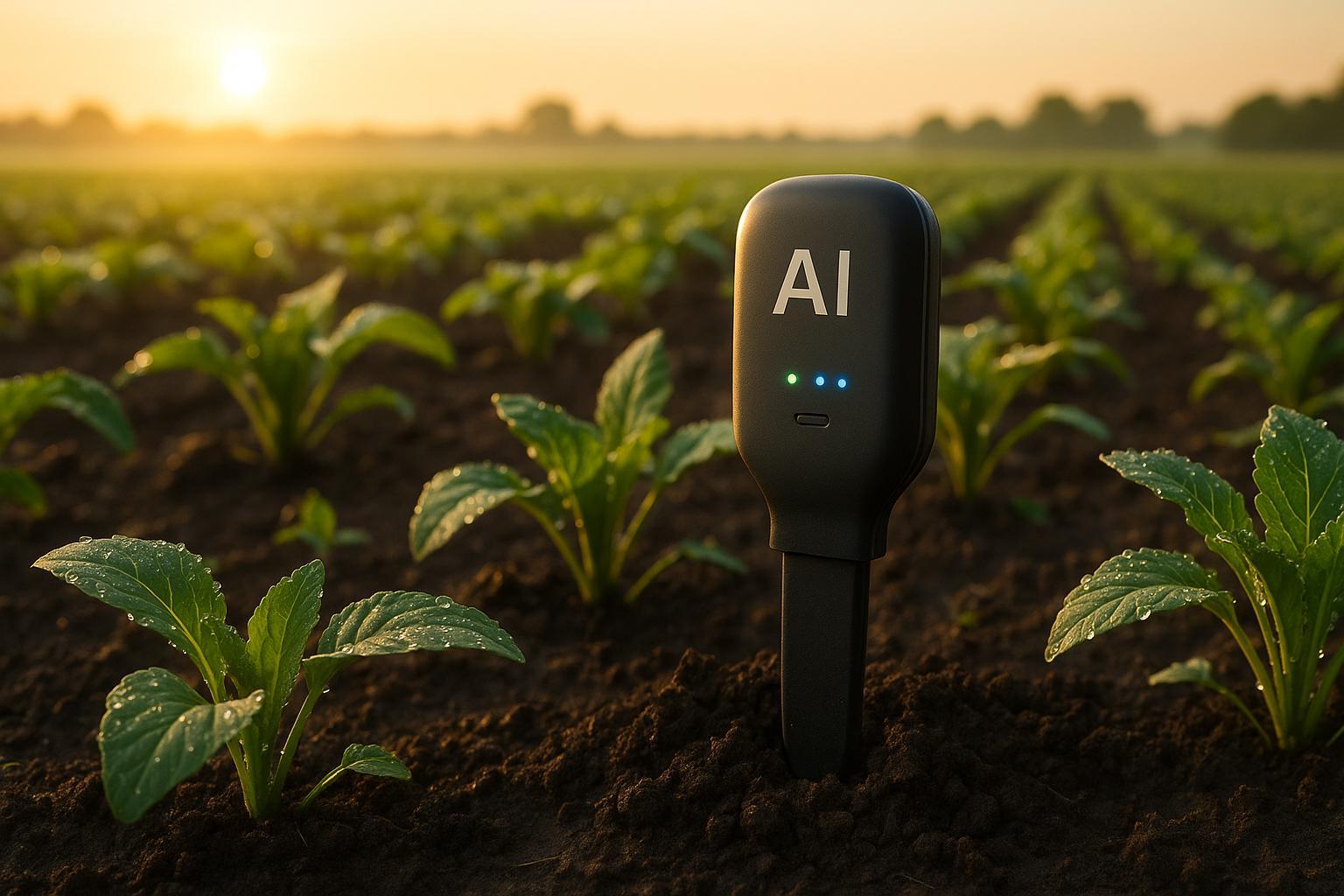
How AI Soil Sensors Monitor Moisture and Nutrients
Explore how AI soil sensors enhance farming efficiency by monitoring moisture and nutrients, optimizing irrigation, and boosting crop yields.
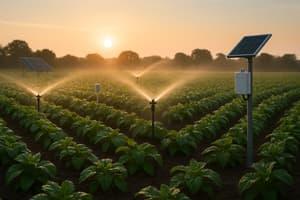
AI vs. IoT in Irrigation Systems
Explore how AI and IoT transform irrigation systems, optimizing water use and enhancing plant health through smart technology integration.
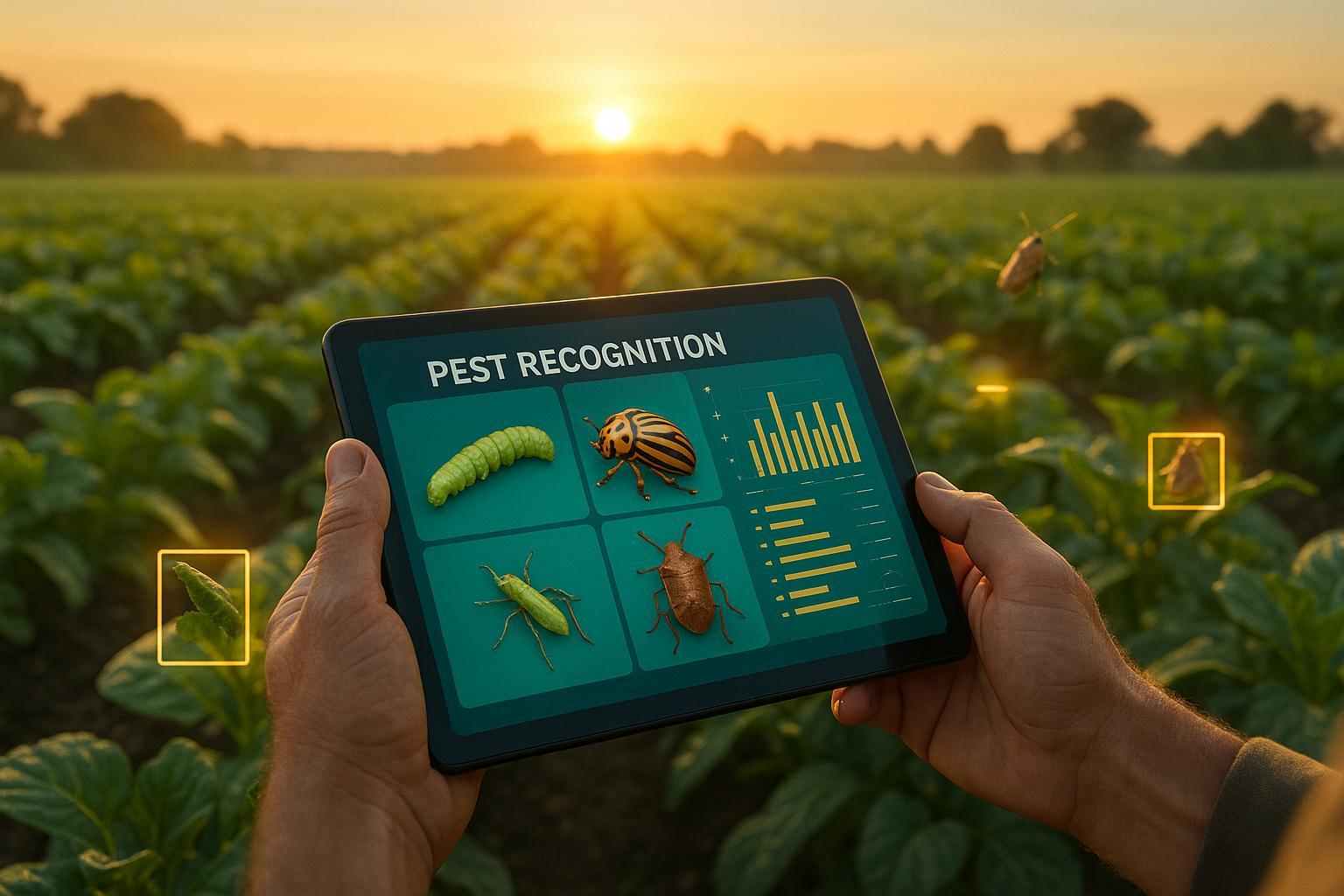
AI Datasets for Pest Recognition: Explained
Explore how AI datasets enhance pest recognition in agriculture, tackling challenges and leveraging synthetic data for improved crop management.

The Benefits of Using Wooden Vegetable Planters: A Complete Guide
Learn about the benefits of using wooden vegetable planters, how to choose the right planter, and how to plant and maintain your vegetables. Get all the information you need to start your own garden today!
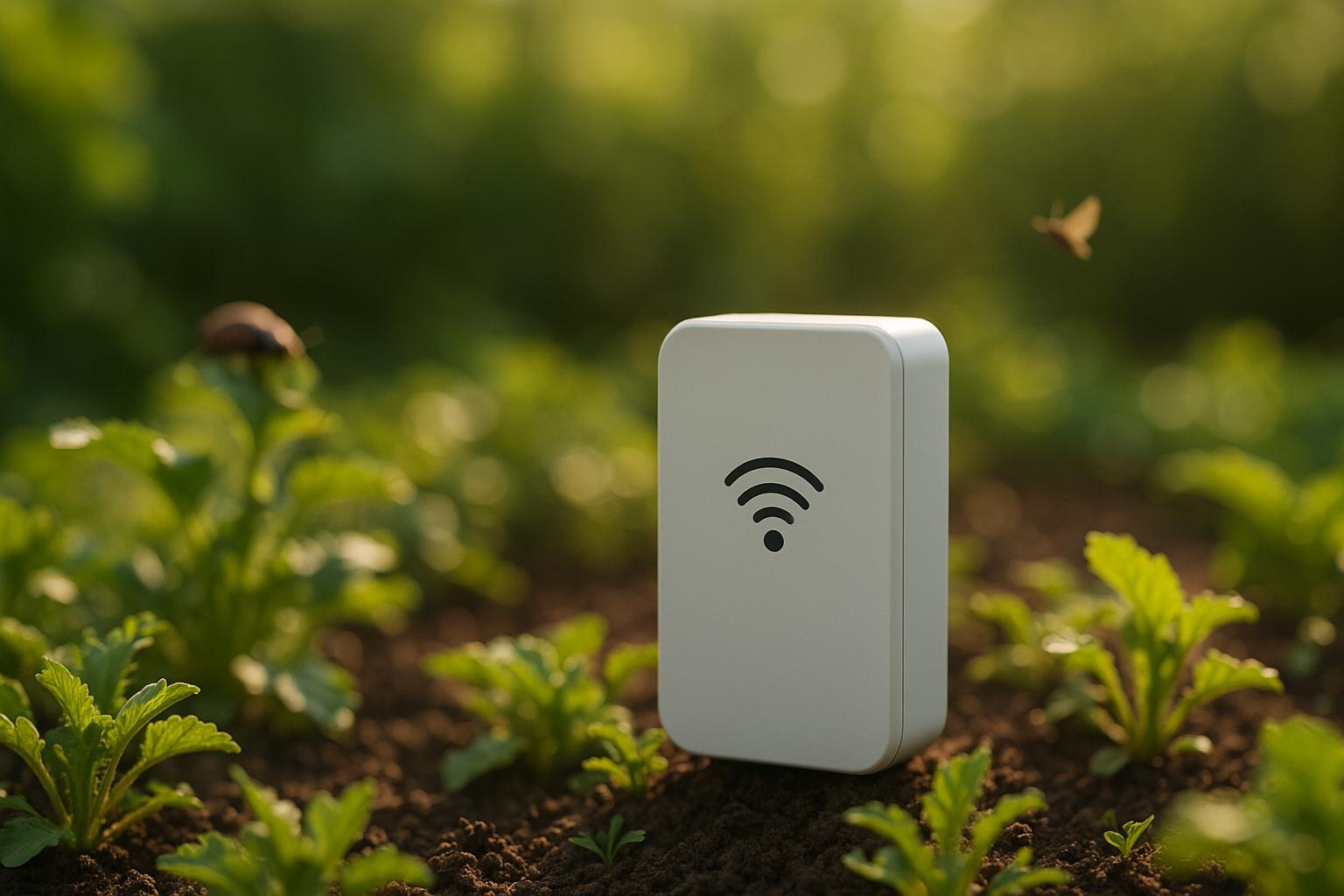
Ultimate Guide to Acoustic Pest Monitoring
Explore acoustic pest monitoring, a sound-based method that detects pests early, reduces pesticide use, and enhances garden management with AI.
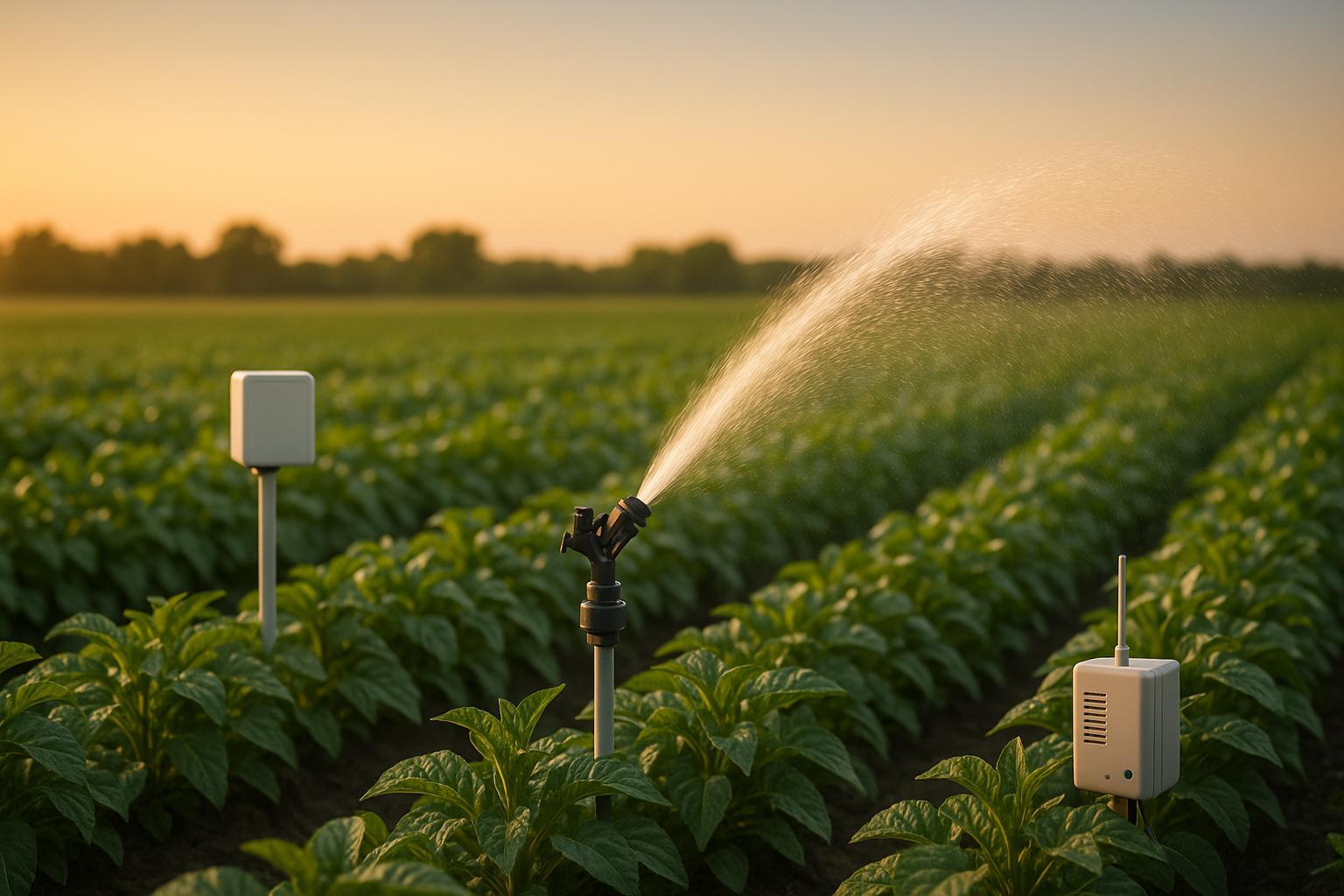
AI-Driven Irrigation: Smarter Water Use
Explore how AI-driven irrigation systems optimize water use, enhance crop health, and promote sustainability in gardening and farming.